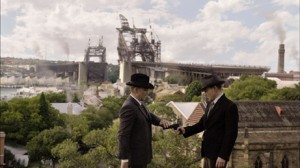Smoke and Mirrors: A spotlight on production design
 With the inaugural Australian Production Design Guild Awards this month, Joanne Whitehead speaks with a selection of Australia’s leading production designers about the state of their sector in the industry.
With the inaugural Australian Production Design Guild Awards this month, Joanne Whitehead speaks with a selection of Australia’s leading production designers about the state of their sector in the industry.
While we so often hear the tired ‘it’s an honour just to be nominated’, during the awards season, for Australian production designers, the ceremony itself will feel like a reward, as their achievements are finally recognised on September 21, when the Australian Production Design Guild (APDG) will hold their inaugural awards.
Though associations like APDG existed in other countries before, the Australian guild is relatively new, created in 2009 by founding members Michael Scott Mitchell, Steven Jones Evans, George Liddle, Catherine Martin, Ian Gracie, Colin Gibson and Owen Paterson. With the awards approaching, it felt appropriate to delve a little further into the often misunderstood role of a production designer.
There are many departments who create the overall feel of a film throughout the project’s life, but it’s the production designer who is there from the beginning, working closely with the director and cinematographer to create the most appropriate environments for the story, within the parameters of the production.


fantastic report on this part of the indusrty..glad to hear a voice! Looking forward to the recognition this department deserves. Well done APDG